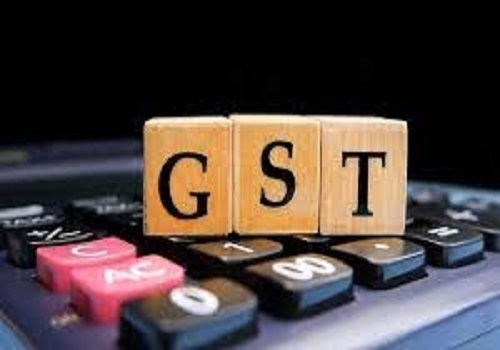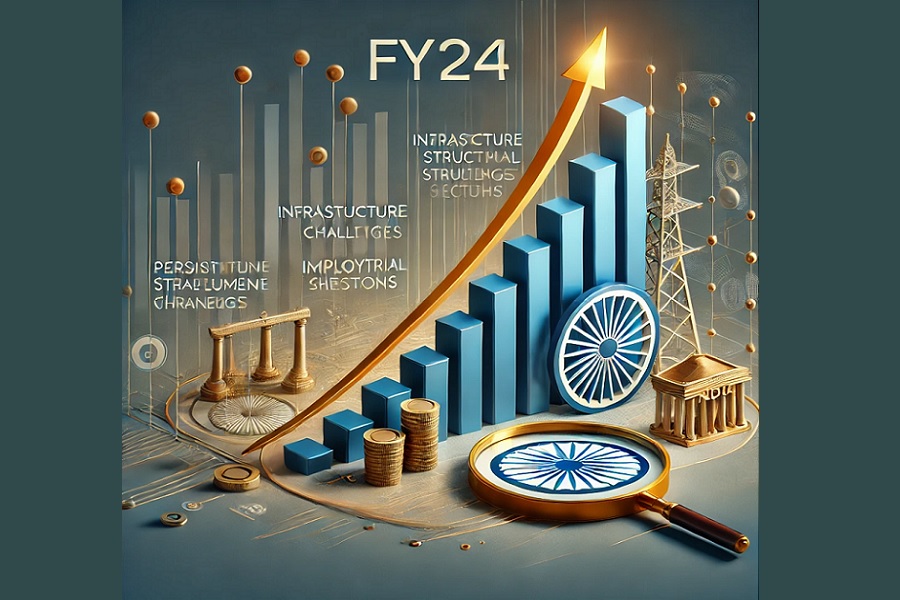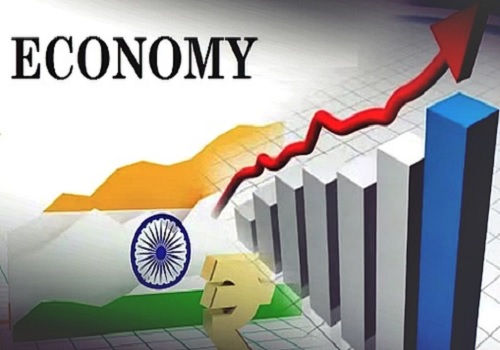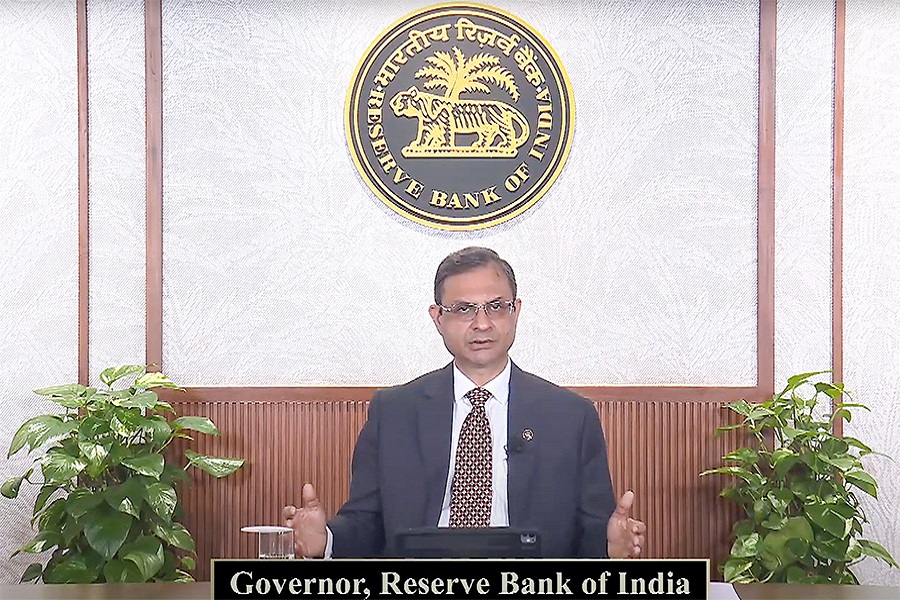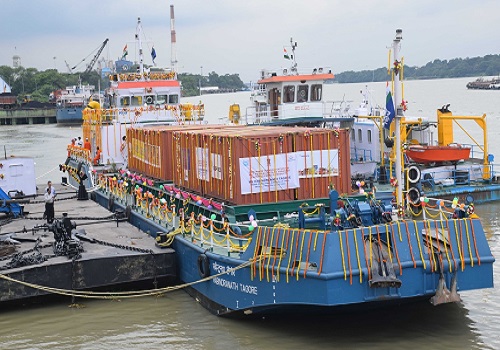The Economy Observer : India - A safe haven amid Tariff turbulence… by Motilal Oswal Financial Services Ltd

India: A safe haven amid Tariff turbulence…
…with record reserves and a service-driven surplus from a wide CAD and rupee volatility earlier
* India’s currency performance in recent years reflects a marked improvement in external resilience and macroeconomic management. Between FY22 and FY25, INR depreciation remained modest and well-contained, ranging between 0.5% and 2.7% YoY. This compares favorably with past periods of volatility, such as FY13 and FY14, when the currency weakened sharply by 13.3% and 11.7%, respectively, during the Taper Tantrum episode. Since FY22, the pace of rupee depreciation has been modest and well-contained, pointing to anchored market expectations and limited speculative pressure. This stability stems from a combination of factors: lower current account deficit (CAD), a rising surplus in services trade, record-high foreign exchange reserves, and proactive policy intervention by the RBI across spot and forward markets (Exhibit 1).
* Amid global tariff uncertainty and renewed volatility in capital markets, the Indian Rupee (INR) emerged as the most stable currency among both advanced economies (AEs) and emerging and developing economies (E&DEs) during the period from Dec’24 to Jul’25. The INR registered a modest 1.0% depreciation against the USD—the smallest among all depreciating currencies, and in stark contrast to the sharp appreciation or volatility seen elsewhere. This modest movement indicates low exchange rate volatility, anchored inflation expectations, and a well-managed external position despite rising global trade frictions.
* Among advanced economies, most currencies appreciated significantly against the USD. The Euro (–10.4%) and Taiwan Dollar (–10.4%) fueled the gains, likely due to portfolio inflows amid policy divergence with the U.S. Federal Reserve. The British Pound (–6.6%), Singapore Dollar (–5.2%), and Japanese Yen (–4.6%) also strengthened meaningfully. These large appreciations reflect heightened sensitivity to global liquidity, risk appetite, and interest rate differentials. Compared to these large movements, the INR’s limited depreciation points to a remarkably stable macroeconomic backdrop and minimal speculative positioning (Exhibit 2).
* Within emerging and developing economies (E&DEs), the Indian Rupee’s modest depreciation of +1.0% stood out as an exception. The vast majority of peer currencies appreciated against the USD during the same period. Notably, the Russian Ruble (–23.5%), Brazilian Real (–9.7%), and Mexican Peso (–7.7%) witnessed healthy appreciations, supported by either commodity windfalls, high interest rate differentials, or tactical capital inflows. Even within Asia, regional peers such as the Malaysian Ringgit (–5.0%), Thai Baht (–4.8%), and Philippine Peso (– 3.1%) appreciated, reflecting stronger trade balances or alignment with the USD interest rate cycle.
* In this context, only four currencies among the 20 tracked in Exhibit 2 depreciated: India (+1.0%), Indonesia (+1.4%), Turkey (+14.5%), and Hong Kong (+1.0%). Among them, Turkey’s sharp depreciation reflects its domestic macroeconomic instability, while Indonesia and Hong Kong experienced minor declines. India’s modest weakening—despite tariff tensions and global market volatility—demonstrates its exchange rate resilience, especially as most other currencies strengthened.
* In this report, we examine five key factors that have contributed to India's external stability amid a challenging global environment marked by tariff-related uncertainty, volatile capital flows, and tightening global financial conditions. Unlike previous episodes such as the 2013 taper tantrum, India’s external sector today exhibits remarkable resilience, supported by a more diversified export mix, a contained CAD, robust foreign exchange reserves, limited exposure to tariff-sensitive sectors, and effective currency management by the Reserve Bank of India. Together, these elements have helped anchor investor confidence and shield the Indian economy from external shocks.
1) Manageable CAD, aided by strong services exports: India’s external sector position in FY24 and FY25 reflects a phase of marked resilience and macroeconomic stability, even amid rising global tariff uncertainty and renewed stress in global capital markets. The CAD has narrowed significantly to just 0.7% and 0.6% of GDP in FY24 and FY25, supported by a robust services trade surplus, record inward remittances, and modest growth in merchandise imports. This stands in sharp contrast to the 2013 taper tantrum episode, when India’s CAD had surged to unsustainable levels—4.3% and 4.6% of GDP in FY12 and FY13, respectively—driven by a wide merchandise trade gap and heavy reliance on oil and gold imports. At the time, India was among the “Fragile Five” economies most exposed to capital flight, and the rupee came under intense depreciation pressure. (Exhibit 3).
* Importantly, India’s export mix has become significantly more services-intensive, while its merchandise trade gap has moderated, strengthening the country’s external position. During the taper tantrum period (FY13), India ran a large merchandise trade deficit of 10.2% of GDP, which, coupled with a relatively modest services trade surplus of 3.5% of GDP, resulted in a sharply negative current account balance. In contrast, by FY24 and FY25, the merchandise trade deficit has narrowed to 8.3% and 8.1% of GDP, respectively, reflecting import moderation and improved export competitiveness in sectors like chemicals, machinery, and petroleum products. At the same time, the services surplus has expanded to 4.5% and 4.8% of GDP, driven by strong global demand for India’s IT, consulting, and financial services. This shift toward a more balanced and less tariff-sensitive trade structure has helped insulate India from the adverse effects of global tariff uncertainty, while also contributing to exchange rate stability and a sharply lower CAD (Exhibit 4).
2) Robust foreign exchange reserves: India’s external buffers have strengthened significantly since the taper tantrum of 2013, providing a critical line of defense against renewed global volatility and tariff-related uncertainty. In FY13, India held just USD294b in foreign exchange reserves, equivalent to an import cover of only 7.2 months, leaving it vulnerable to capital flight and currency shocks. As of May’25, reserves have more than doubled to USD691b, and import cover has risen to 11.4 months, reflecting stronger balance of payments dynamics and proactive reserve accumulation by the RBI. Compared to other emerging market peers, India’s reserve position is now among the most robust—exceeding Brazil (USD341b), Thailand (USD258b), and Indonesia (USD152b). Even in terms of import cover, India fares better than major peers like Mexico (4.5 months), Indonesia (7.0), and South Africa (6.2; Exhibits 5 and 6).
* Overall, India’s substantial foreign exchange reserves provide a strong safeguard against global financial tightening, exchange rate fluctuations, and trade disruptions. Consequently, the ongoing global tariff uncertainty poses no immediate threat to India’s macroeconomic stability.
3) Limited exposure to tariff-sensitive trade sectors: India’s export structure offers inherent insulation from tariffinduced shocks. Unlike economies heavily reliant on electronics, semiconductors, or auto components—such as Taiwan, South Korea, or Germany—India’s exports are tilted toward software services, pharmaceuticals, and traditional goods (e.g., textiles, gems & jewelry). Services exports accounted for nearly 47% of India’s total exports in FY25 (USD388b), up from only 32% in FY13 (USD146b), with software & IT exports alone reaching USD181b in FY25, up from USD66b in FY13 (Exhibits 7 and 8). This makes India less vulnerable to tariff escalation on physical goods, preserving export earnings even in a protectionist environment.
4) A selectively liberalized capital account: India maintains a partially open capital account, with calibrated controls on debt inflows and sensitive sectors. While foreign portfolio investments (FPIs) are permitted in government bonds and equities, short-term speculative flows are more regulated than in fully open economies like South Korea or Brazil. Moreover, growing participation in global bond indices (e.g., JPMorgan EM Bond Index inclusion) has helped diversify capital sources and reduce dependence on volatile flows. This structure lowers the risk of sudden stops, especially during risk-off episodes triggered by tariff news or Fed tightening.
5) RBI’s proactive and strategic FX management: The RBI's foreign exchange management framework has become significantly more proactive since 2013. Back then, the central bank was compelled to implement emergency measures, such as capital flow restrictions and rate hikes, which temporarily stabilized the rupee but created broader uncertainty. Currently, the RBI actively manages the rupee using a non-disruptive, two-sided intervention strategy. During FY25, it intervened through both the spot and forward markets, smoothing excessive volatility without enforcing a rigid exchange rate level. RBI sold around USD34.5b in FY25 in net spot operations, the highest since the global financial crisis of FY09 (Exhibit 9). Its interventions are data-driven and often preemptive, helping to stabilize expectations. The RBI also maintains strong communication credibility, reinforcing confidence among global investors and domestic participants that rupee depreciation will remain contained and non-disruptive.
* India’s external sector has undergone a notable structural transformation over the past decade, evolving into a far more resilient and stable component of the macroeconomy. The experience of the 2013 taper tantrum exposed India’s vulnerabilities—most notably, a wide CAD, limited foreign exchange reserves, and heavy reliance on volatile capital flows. In contrast, the current landscape in FY24–FY25 reflects a far stronger footing: the CAD is low and manageable, foreign exchange reserves are at record highs, and the composition of exports has shifted decisively toward high-value, less tariff-sensitive services. Additionally, India’s selective capital account liberalization and the RBI’s proactive foreign exchange management have provided crucial buffers against global shocks, including those triggered by tariff uncertainty and monetary policy divergence.
* The Indian rupee has remained one of the most stable currencies across both advanced and emerging markets, showing that investors trust India’s economic policies and strong external position. India has focused on diversifying its exports, managing its finances wisely, and opening its economy to global capital in a gradual and safe manner. This has helped the country stay strong even when global conditions are uncertain. Because India exports more services and fewer tariff-sensitive goods, it faces less risk from rising trade tensions around the world. Overall, India’s external sector has become a solid foundation for its growth, not a weakness.
For More Research Reports : Click Here
For More Motilal Oswal Securities Ltd Disclaimer
http://www.motilaloswal.com/MOSLdisclaimer/disclaimer.html
SEBI Registration number is INH000000412










More News

The Economy Observer : Rural rules, urban follows by Motilal Oswal Financial Services Ltd
